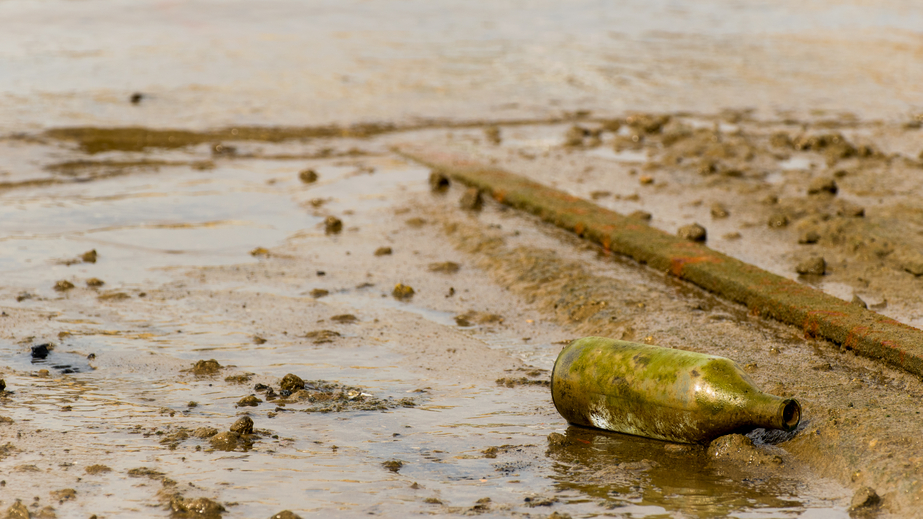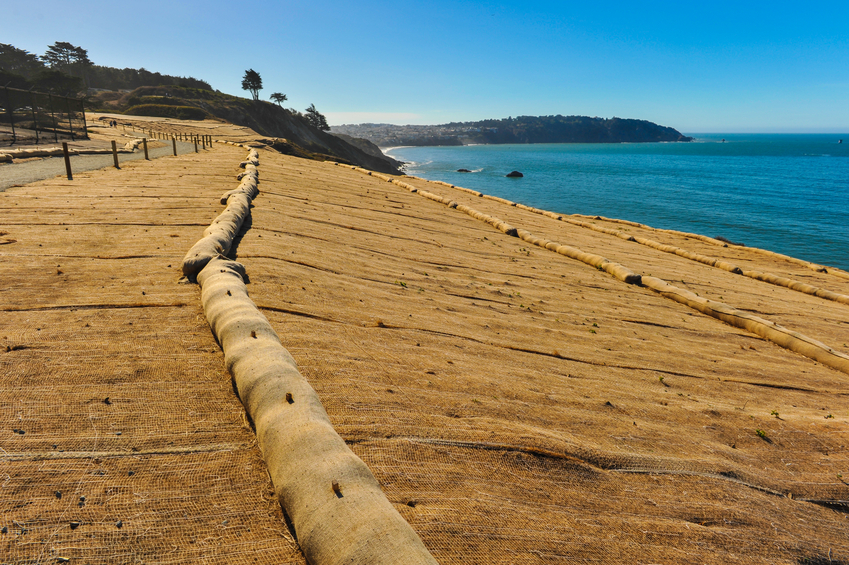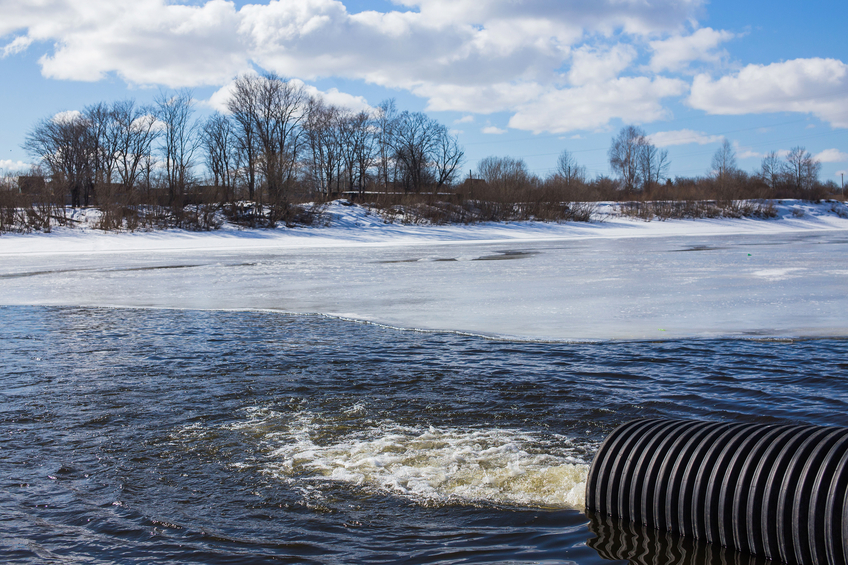Site Remediation Protection 15 PDH Discount Package
Courses in this Package
Basics of Groundwater Protection (C02-040)
An Introduction to Operation and Maintenance of Landfill Gas Systems (C03-047)
Cleanup Methods for Contaminated Soil and Groundwater (C04-023)
Construction Site Storm Water - Runoff Control (C02-001)
Introduction to NPDES Construction Site General Permit (C04-003)

This online engineering PDH course introduces the sources of groundwater, lists its primary uses, discusses the many possible sources of contamination, explains options available after contamination has occurred, and briefly outlines how federal and state laws are used to protect groundwater.
Approximately half of all Americans depend on groundwater for household water use. Many agricultural and industrial activities also depend heavily on groundwater supplies. Given the importance of groundwater for the nation, a basic understanding of the principles of groundwater protection is necessary for engineers involved in governmental and industrial actions affecting groundwater.
This 2 PDH online course is intended for engineers in government and industry needing a broad overview of groundwater protection issues as they arise in the local community and in industry.
This PE continuing education course is intended to provide you with the following specific knowledge and skills:
- Learning about the sources and movement of groundwater
- Familiarizing with the kinds of aquifers
- Understanding the primary uses of groundwater
- Learning about the causes of contamination
- Knowing the options available after contamination: containment, withdrawal, treatment, rehabilitation, and abandonment
- Familiarizing with the federal laws protecting groundwater
- Understanding the role of states in protecting groundwater
- Understanding the actions at the community level that can be taken to protect groundwater
In this professional engineering CEU course, you need to review the course document titled, "Basics of Groundwater Protection" which is based on the EPA document, "Citizen's Guide to Ground Water Protection", EPA 440/6-90-004, published in 1990 and re-published in 1999 with revised appendices.
Upon successful completion of the quiz, print your Certificate of Completion instantly. (Note: if you are paying by check or money order, you will be able to print it after we receive your payment.) For your convenience, we will also email it to you. Please note that you can log in to your account at any time to access and print your Certificate of Completion.

This online engineering PDH course discusses the need for an operation and maintenance (O&M) plan for a landfill gas collection system that addresses the following: extraction wells, LFG monitoring probes, condensate collection and treatment, and flare station.
The operation and maintenance of landfill gas (LFG) system typically includes a site-specific monitoring program that is flexible and performance based. LFG systems should be monitored on a regular basis to enable adjustments to be made to the wells to maximize extraction, prevent migration, and minimize drawing oxygen into the landfill. The monitoring procedures should be regularly evaluated as changing climatic and operational conditions can have an effect on the results obtained.
This 3 PDH online course is intended for civil engineers, geotechnical engineers, construction managers and landfill operators seeking an introduction to the operation and maintenance of landfill gas collection systems.
This PE continuing education course is intended to provide you with the following specific knowledge and skills:
- Learning about site specific monitoring programs
- Understanding the fundamental requirements for extraction wells
- Knowing how frequently extraction wells should be monitored
- Understanding the importance of balancing techniques for multiple extraction wells
- Learning about perimeter LFG migration control
- Learning how to address leachate blockage issues at extraction wells
- Understanding the importance of monitoring conditions that may lead to landfill fires
- Learning how to employ LFG monitoring probes
In this professional engineering CEU course, you need to review the document titled, “An Introduction to Operation and Maintenance of Landfill Gas Systems”.
Once you complete your course review, you need to take a multiple-choice quiz consisting of fifteen (15) questions to earn 3 PDH credits. The quiz will be based on the entire document.
Upon successful completion of the quiz, print your Certificate of Completion instantly. (Note: if you are paying by check or money order, you will be able to print it after we receive your payment.) For your convenience, we will also email it to you. Please note that you can log in to your account at any time to access and print your Certificate of Completion.

This online engineering PDH course describes these methods, and, for each method, answers six questions in a concise and accurate manner:
-
What is it?
-
How does it work?
-
How long will it take?
-
Is it safe?
-
How might it affect the public?
-
Why use it?
EPA's Technology Innovation and Field Services Division has developed a set of twenty-two guides summarizing cleanup methods used at Superfund and other sites.
This 4 PDH online course is intended for civil, construction, environmental, and geotechnical engineers, and is especially useful for Remedial Project Managers and Community Involvement Coordinators who must explain complicated treatment technologies to the lay public.
This PE continuing education course is intended to provide you with the following specific knowledge and skills:
- Learning the goals of activated carbon treatment
- Learning about air stripping
- Being introduced to capping
- Learning about the proper techniques of ecological revitalization
- Understanding the principles of evapotranspiration covers
- Understanding the need for excavation of contaminated soil
- Becoming familiar with the process of fracturing for site cleanup
- Learning the goals of greener cleanups
- Selecting incineration when appropriate
- Deciding when to apply in situ chemical oxidation
- Learning about in situ chemical reduction
- Being introduced to in situ thermal treatment
- Learning about the proper techniques of monitored natural attenuation
- Understanding the principles of permeable reactive barriers
- Understanding the need for phytoremediation
- Becoming familiar with the process of pump and treat
- Learning the goals of soil vapor extraction and air sparging
- Selecting solidification and stabilization when appropriate
- Being introduced to thermal desorption
- Deciding when to apply vapor intrusion mitigation
- Learning about vertical engineered barriers
In this professional engineering CEU course, you need to review the course document which is based on a compilation of the EPA's Technology Innovation and Field Services Division's "A Citizen's Guide Series to Cleanup Technologies", (http://cluin.org/products/citguide) published in 2012.
Upon successful completion of the quiz, print your Certificate of Completion instantly. (Note: if you are paying by check or money order, you will be able to print it after we receive your payment.) For your convenience, we will also email it to you. Please note that you can log in to your account at any time to access and print your Certificate of Completion.

This online engineering PDH course addresses EPA's BMP for the protection of wetlands and aquatic ecosystems, protection of public health, flood control and more.
Erosion and sedimentation related to construction site storm water runoff can significantly affect the aquatic population and hydraulic characteristics of the receiving waters. Alterations in hydraulic characteristics of streams receiving runoff include higher peak flow rates, increased frequency and duration of bankfull and subbankfull flows, increased occurrences of downstream flooding, and reduced baseflow levels.
EPA recognizes that such alterations can be prevented by implementing an effective storm water management program. Therefore the EPA published the Storm Water Phase II Rule on
This 2 PDH online course is applicable to municipality owners and/or operators, construction contractors/workers, site developers, engineers, managers, and all other personnel involved in the implementation of runoff controls for storm water runoff from construction sites.
This PE continuing education course is intended to provide you with the following specific knowledge and skills:
- Types and methods of runoff control systems
- Applicability
- Siting and design criteria
- Maintenance and cost considerations
- Effectiveness and limitations
In this professional engineering CEU course, you need to review EPA’s Best Management Practice relating to the “Runoff Control” section of the “Construction Site Storm Water Runoff Control”. This section of the BMP addresses the following runoff control methods:
- Land Grading
- Permanent Diversions
- Preserving Natural Vegetation
- Construction Entrances
- Check Dams
- Filter Berms
- Grass-Lined Channels
- Riprap
Once you complete your course review, you need to take a multiple-choice quiz consisting of fifteen (15) questions to earn 2 PDH credits. The quiz will be based on the “Runoff Control” section of this EPA publication.
Upon successful completion of the quiz, print your Certificate of Completion instantly. (Note: if you are paying by check or money order, you will be able to print it after we receive your payment.) For your convenience, we will also email it to you. Please note that you can log in to your account at any time to access and print your Certificate of Completion.

This online engineering PDH course introduces the reader to the National Pollutant Discharge Elimination System (NPDES) construction general permit (CGP). The NPDES regulations apply to nearly every construction site development. Understanding the regulations, requirements, and coverage provided under the CGP is essential to staying in compliance with the law. Following the requirements under the CGP will also reduce the impacts of construction on the environment.
Construction inevitably causes some degree of disturbance and compaction of the soil, the loss of vegetation density, and the creation of impervious surfaces. Water quality can be dramatically impacted by inadequate construction site erosion and sediment control measures. For these reasons the Environmental Protection Agency regulates even relatively small construction sites under the Phase II NPDES regulations.
"Any construction activity that will, or is part of a "common plan" of development or sale that will, disturb one or more acres and has the potential to have a discharge of storm water to a water of the United States must either have a permit OR have qualified for a waiver. If all of the storm water from the construction activity is captured on-site and allowed to evaporate, soak into the ground on-site, or is used for irrigation, you do not need coverage under this permit. Under the Clean Water Act, it is illegal to have a point source discharge of pollutants to a water of the United States that is not authorized by a permit. If there is a potential for a discharge, you need to apply for coverage under this permit." (EPA Fact Sheet, 2005).
This 4 PDH online course is applicable to practicing engineers, contractors, developers, regulators, and all other personnel involved with construction sites.
This PE ccontinuing education ourse is intended to provide you with the following specific knowledge and skills:
- Understanding of the general history of the NPDES regulations
- Knowing when a permit is required
- Determining if a project eligible for a CGP
- Learning what coverage is provided by the permit
- Understanding the requirements under the permit
- Familiarizing with sources of additional information
In this professional engineering CEU course, you need to review the EPA Fact Sheet, 2005 "NPDES General Permit for Storm Water Discharges from Construction Activities".
Upon successful completion of the quiz, print your Certificate of Completion instantly. (Note: if you are paying by check or money order, you will be able to print it after we receive your payment.) For your convenience, we will also email it to you. Please note that you can log in to your account at any time to access and print your Certificate of Completion.